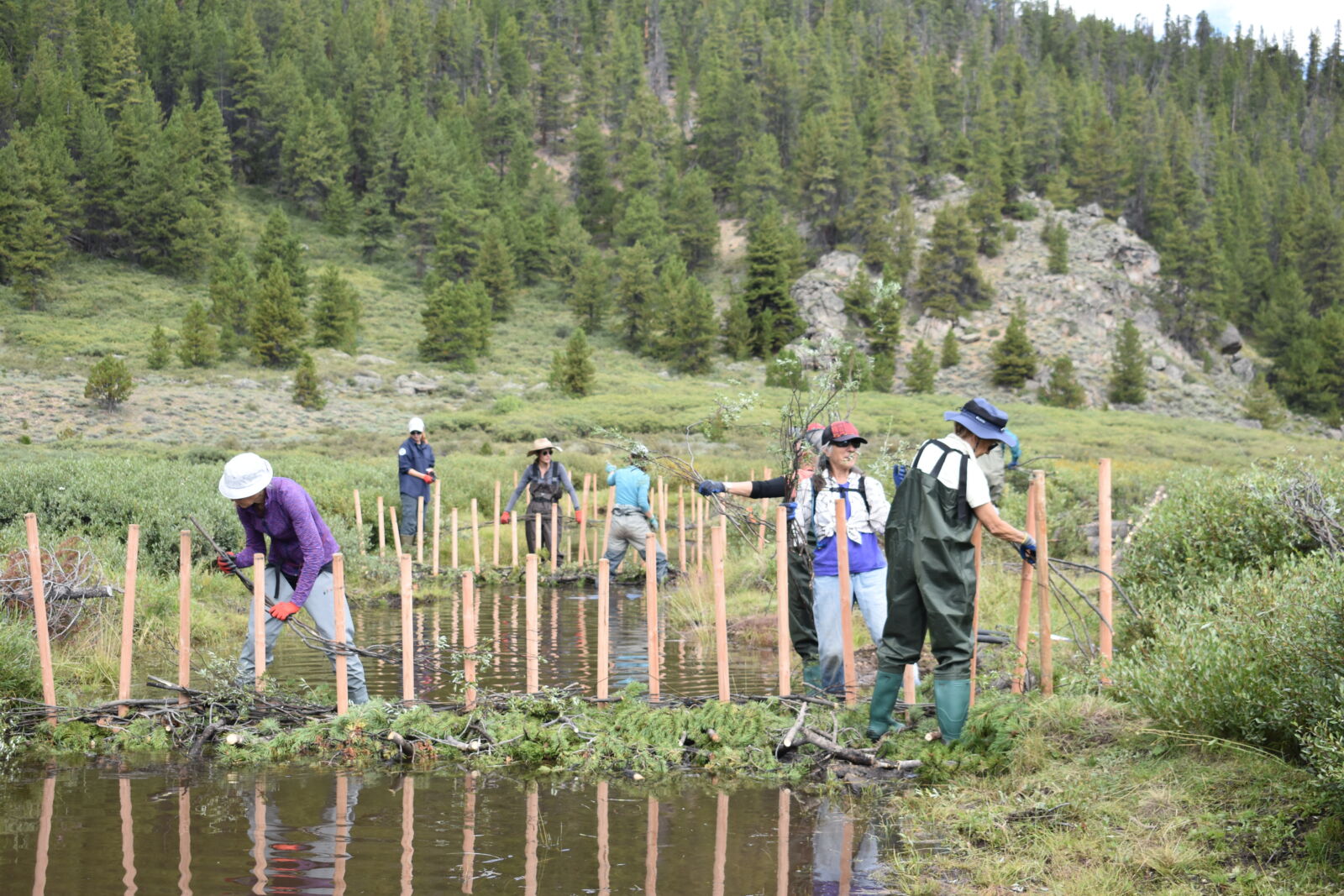Low-tech, process-based restoration, abbreviated LTPBR, is certainly a mouthful to say, but in practice, it’s actually quite simple. In a previous blog post, “What Is Low-Tech Process-Based Restoration, and How Can It Help the Colorado River?” we describe how LTPBR can help restore the hydrology of the strained Colorado River Basin. But what is LTPBR? Why has it generated so much excitement in the natural resource management sector? What does LTPBR have to do with beavers?
LTPBR structure along Trail Creek.
At its most fundamental level, low-tech, process-based restoration attempts to return a stream to its natural, undisturbed state by mimicking a healthy stream corridor's natural processes and functions. Healthy streams are not neat and tidy – they meander and flood the surrounding meadows, shifting their course over time. The key to these natural systems and thriving riparian zones are beavers.
Industrious creatures, beavers alter stream corridors, causing the water to spread out over the floodplain and saturate the area before flowing down the valley. By saturating the valley bottom with water, the beavers improve conditions for wetland vegetation, fish species that rely on still water and ponds, and allow more of the water to percolate into the water table below. Without beavers and the meandering streams they engineer, the water simply rushes down the stream channel, carrying sediment and causing erosion as it goes.

LTPBR structures being built on Trail Creek. Photo by Eli Smith.
Now you’re probably asking, “if beavers are so great at maintaining stream health, why do we need LTPBR?” The answer goes back to the 1700s fur-trade and the near-extirpation of the North American Beaver for their prized pelt. Across the West, the beaver population is now estimated to be less than 15 percent of its historical population according to the Beaver Restoration Guidebook. With so few beavers left on the landscape, many streams are degraded, and significant wetland acreage has been lost. Through low-tech, process-based restoration practices, not only can we restore riparian ecosystems to their historical conditions, but we also create suitable habitat for beavers to recolonize.
Aerial photo from Trail Creek post-LTPBR implementation. Floodplain is clearly visible. Photo courtesy of EcoMetrics.
A great example of this work can be seen on Trail Creek in the upper Taylor River watershed above Crested Butte, Colorado. Starting in 2021, restoration practitioners, volunteers, and students coalesced to implement LTPBR techniques on a stretch of Trail Creek. Installing 62 mimicry structures in 2021 and 254 mimicry structures in 2022, the project has rewetted over 55 riparian acres along Trail Creek. “Mimicry structures” refers to features that attempt to recreate the effects of beavers in a stream. Most notably, after the first two years of the Trail Creek restoration project, beavers have moved back into the project site, taking over the hard work of dam building and ensuring a sustainable future for the stream and the achievements of the restoration work.
While addressing the drought and water shortages across the West will require cooperative efforts to conserve water, LTPBR offers a promising and shockingly simple way to start revitalizing the many streams and riparian areas that feed the Colorado River. By restoring riverscapes to their historical state and then allowing natural processes to take over, LTPBR promotes holistic ecosystem health, including thriving streams for all.
Thanks to the Walton Family Foundation for their support of this work.
Cover photo by Olivia Reinhardt.
--------
Did you learn something new in this blog post? We hope so! The ecology that binds together everything on our National Forests is a fragile web, and we at the NFF are committed to doing all we can to ensure the healthiest forest ecology we can. To do so requires the support of caring individuals like you. Will you join us to ensure this critical work continues? Simply click here to join with thousands in this important work. Thank you!

